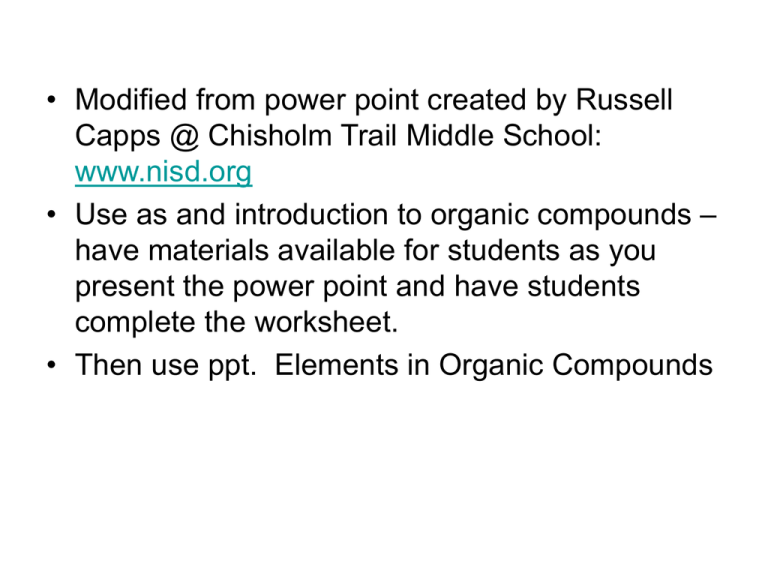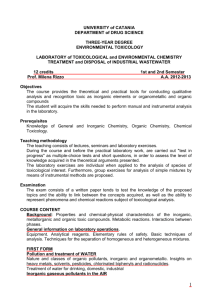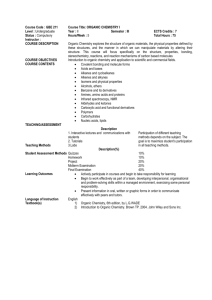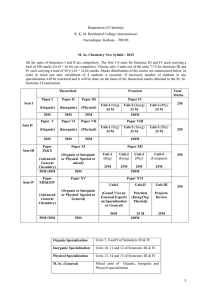Organic
advertisement

• Modified from power point created by Russell Capps @ Chisholm Trail Middle School: www.nisd.org • Use as and introduction to organic compounds – have materials available for students as you present the power point and have students complete the worksheet. • Then use ppt. Elements in Organic Compounds A COMPARISON TEKS focus (7.6) Matter and energy. The student knows that matter has physical and chemical properties and can undergo physical and chemical changes. The student is expected to: (A) identify that organic compounds contain carbon and other elements such as hydrogen, oxygen, phosphorus, nitrogen, or sulfur; Organic • Always contain Carbonusually carbon/hydrogen bonds • Molecules typically have asymmetrical structures & complicated formulas • Biotic: Essential parts & products of living creatures (remember carbon based life forms?????) or Inorganic? • Do not have to contain carbon • Molecules typically have symmetrical structures & more simple formulas • Abiotic. Often mined from the earth Aluminum Foil Composition: Thin sheets of Pure aluminum metal Origin: most abundant metal in the earth’s crust Chemistry Formula: Al Structure: INORGANIC Nail Chemistry Formula: Fe3C Structure Composition: Wrought Iron- A metal alloy Origin: Iron Ore mined from the earth INORGANIC Salt Chemistry Formula: NaCl Structure : Composition: Sodium Chloride (sodium & chlorine) Origin: Compound found in crystal form. Obtained from mines in the ground or from evaporation of sea water. INORGANIC Glass Marble Composition: Soda glass is mostly made of silica Chemistry Formula SiO4 Structure INORGANIC Origin: Glass formation begins with heating and purifying grains of sand Crackers ORGANIC Composition: Chemistry of Starch Formula: n(C6H10O6) Crackers are primarily flour which high in Starch Carbohydrates Structure: Origin: Flour is processed wheat or corn ORGANIC Half & Half Chemistry Formula: CH3(CH2)10CO2H Structure: Composition: In addition to many other macromolecules; half & half has a high lipid (fat) content Origin: Half & half is a milk product typically obtained from dairy cows ORGANIC Legume Chemistry of Lysine: Composition: In addition to many other macromolecules, legumes are high in the amino acid lysine formula: C6H14N2O2 Structure Origin: Legumes are plants that grow pods possessing beans or peas Chemistry Formula: C55H72O5N4Mg structure : Leaf ORGANIC Composition: A leaf is composed of many macromolecules, including chloropyll, a chemical essential for photosynthesis Origin: Leaves are found on most photosynthetic plants







